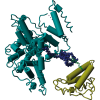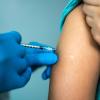A small number of New York City wild birds carry the highly pathogenic H5N1 avian influenza, according to a recent study published in the Journal of Virology.

The work highlights that the interface between animals and humans that may give rise to zoonotic infections or even pandemics is not limited to rural environments and commercial poultry operations.
“To my knowledge, this is the first large-scale US study of avian influenza in an urban area,” said study co-author Christine Marizzi.
“Birds are key to finding out which influenza and other avian viruses are circulating in the New York City area, as well as important for understanding which ones can be dangerous to both other birds and humans.”
In the study, 1927 faecal samples were collected and screened between January 2022 and November 2023, H5N1 was detected in six city birds representing four different species.
All the positive samples came from the urban wildlife rehabilitation centres, stressing the critical role such centres can play in viral surveillance. By comparing the genetic makeup of the samples, the researchers found that they were slightly different and belonged to two different genotypes, which are both a mix of Eurasian H5N1 2.3.4.4.b clade virus and local North American avian influenza viruses. New York City is a popular stopover location for migrating wild birds during their journey.
Image Credit | Getty




